Coloquio: La Astronomía en los tiempos de la IA
- 2025-08-21 14:00 |
- Aula Federman
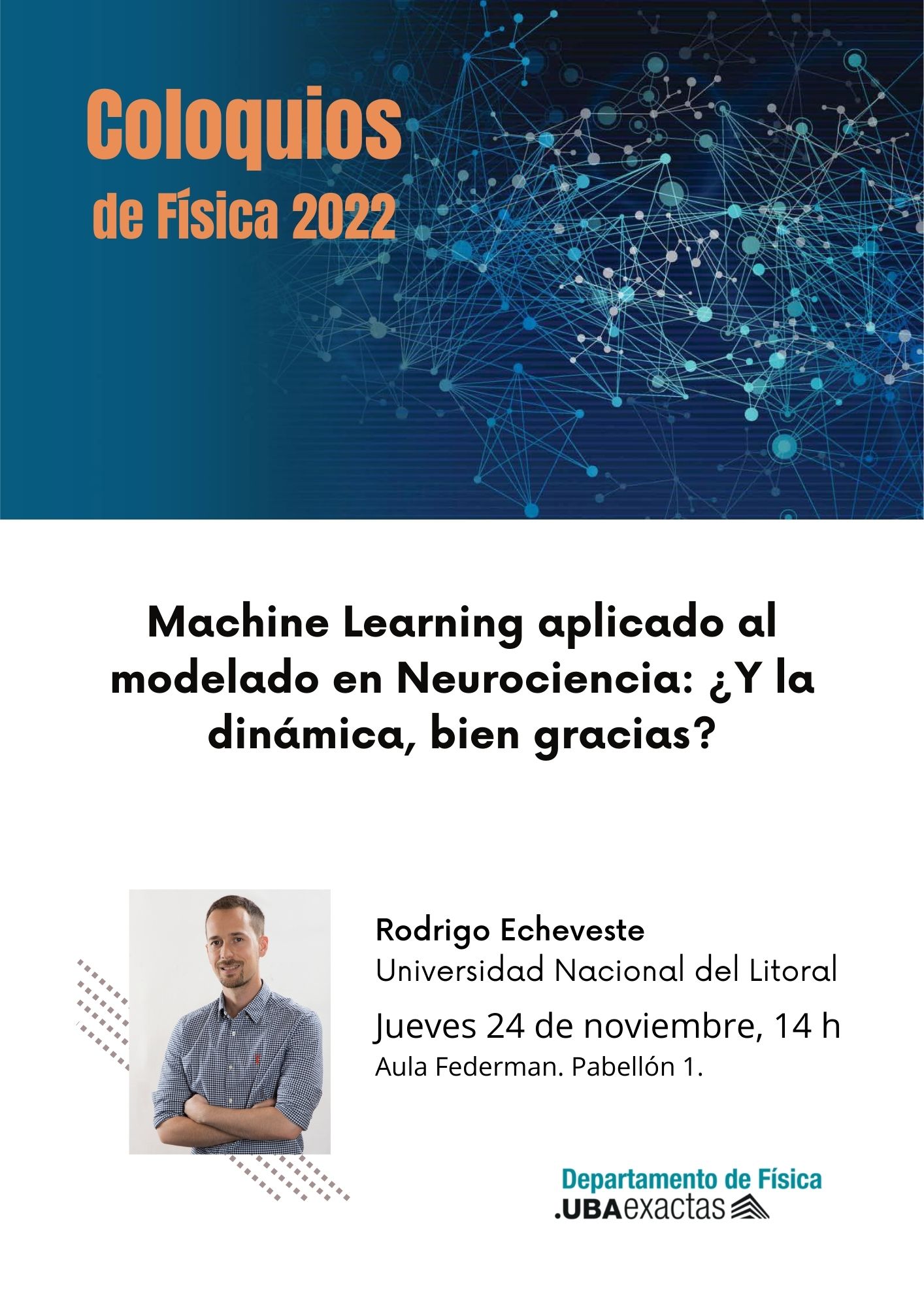
Rodrigo Echeveste
Universidad Nacional del Litoral
El modelado en neurociencia computacional con herramientas del aprendizaje automático es un área de fuerte crecimiento reciente y de mutuo beneficio para ambas disciplinas. Una de las ideas centrales detrás de este enfoque es que optimizando redes neuronales artificiales con el objetivo de realizar tareas relevantes para el cerebro, es posible encontrar modelos que imiten distintos aspectos del procesamiento cortical. Las redes neuronales convolucionales profundas, se inspiraron originalmente en el procesamiento sensorial humano, y son en la actualidad los mejores predictores de las respuestas promedio de neuronas en múltiples áreas de la corteza cerebral. Sin embargo, estas arquitecturas no están diseñadas para representar fielmente la incerteza de sus predicciones, lo cual es central en el contexto de la percepción, donde la información que recibimos de nuestros sentidos es siempre ruidosa e incompleta. Por otro lado, estos modelos carecen de dinámica y no capturan la enorme variabilidad de las respuestas corticales, tanto en el tiempo como ante presentaciones sucesivas del mismo estímulo que se observa en el cerebro.
En esta charla haremos primero una breve reseña del uso de redes convolucionales como herramientas de modelado en neurociencia, para luego enfocarnos en modelos que utilicen conexiones recurrentes para poder ir más allá de las respuestas medias, y lograr capturar aspectos dinámicos de las respuestas corticales. Además mostraremos un ejemplo de cómo este tipo de modelos puede usarse para tender puentes entre fisiología y percepción, no solamente en la población neurotípica sino también en personas del espectro autista.
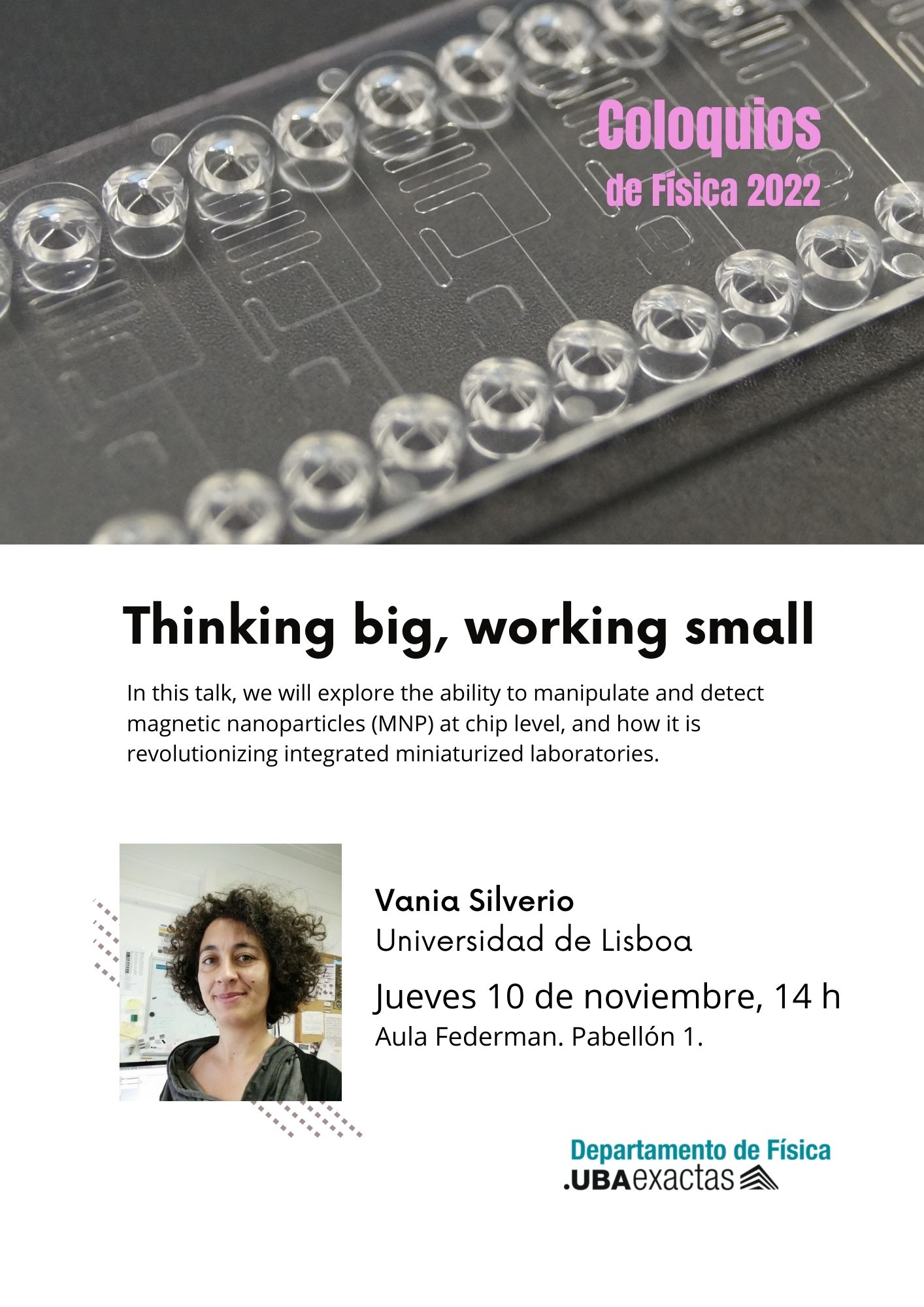
Vania Silverio - Universidad de Lisboa
In this talk, we will explore the ability to manipulate and detect magnetic nanoparticles (MNP) at chip level, and how it is revolutionizing integrated miniaturized laboratories. The choice of magnetoresistive (MR) sensors results from their outstanding achievements in many areas, from reading magnetic bits for information storage (magnetic hard disk recording) to nanoparticle detection in biomedical platforms or neuronal synaptic activity measurements in neurosciences. Irrespective of the application, the integration of MR sensors and MNP offers quantitative and qualitative functionality to biosensing (e.g. comparing to optical or chemical methods). Moreover, magnetic and electromagnetic actuation are becoming extremely attractive components to precisely transport, mix, manipulate, and concentrate (sort, separate, purify, and detect biomolecules) MNP for binding and analysis. The ability to match these distinct technologies is a growing and not much explored route to provide ultra-compact heterogeneous integration of hybrid systems within multifunctional chips. However, the challenges of handling liquids and MNP over a chip combine with those for miniaturization of microelectronics. When these are overcome, the result is an integrated microfluidic system with added capabilities, able to answer to demands in biomedicine and drug delivery.
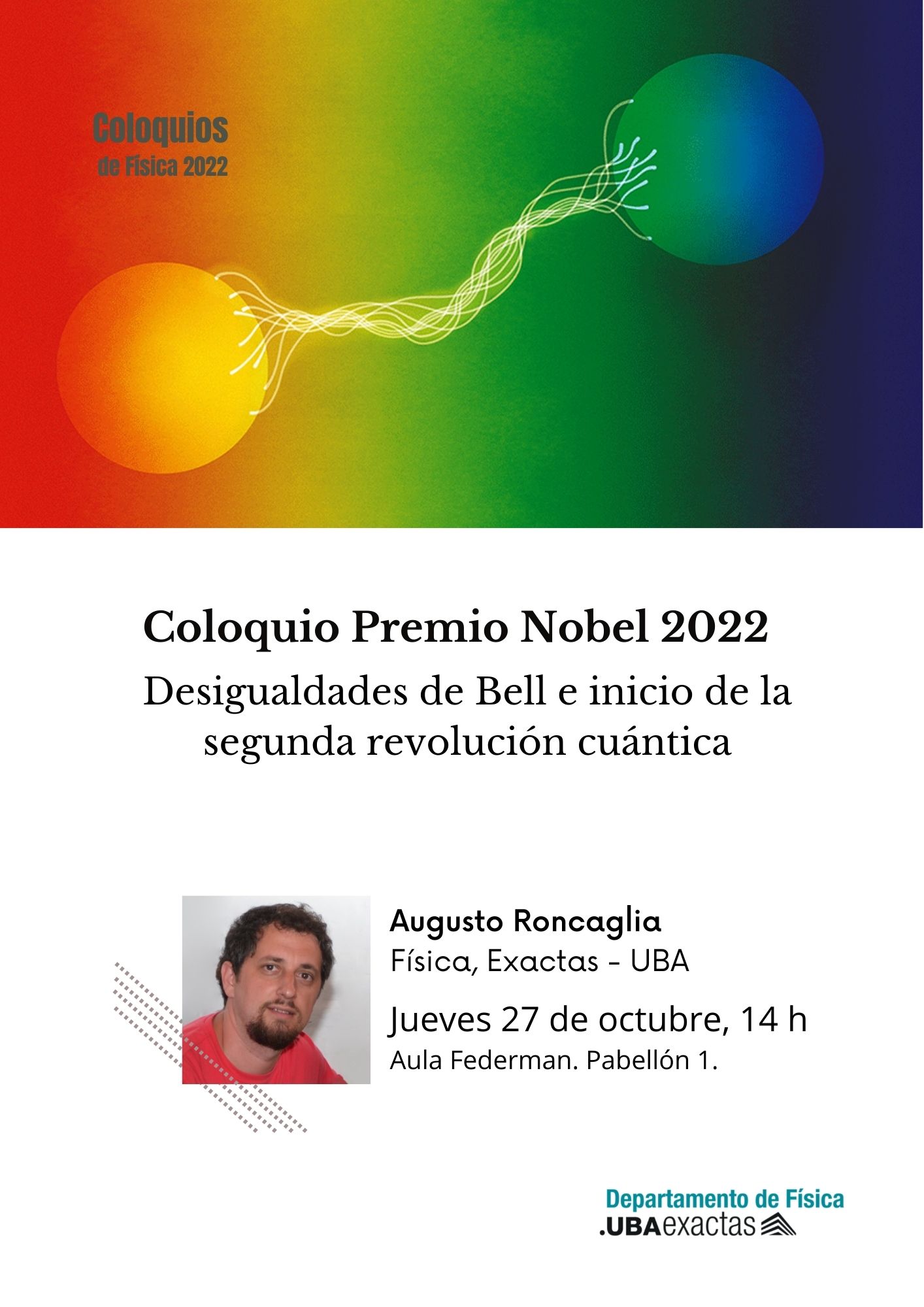
Desigualdades de Bell y el inicio de la segunda revolución cuántica
Augusto Roncaglia & Christian Schmiegelow
Física, Exactas-UBA.
En octubre de 2022 Alain Aspect, John Clauser y Anton Zeilinger recibieron el premio Nobel de física "por sus experimentos con fotones entrelazados que establecieron la violación de las desigualdades de Bell, y por su calidad de pioneros en la ciencia de la información cuántica" . En este coloquio hablaremos sobre algunos de sus logros y cómo estos influyeron en la visión que tenemos de la naturaleza. Además, pondremos en contexto de qué modo dieron lugar a lo que hoy se conoce como la segunda revolución cuántica.
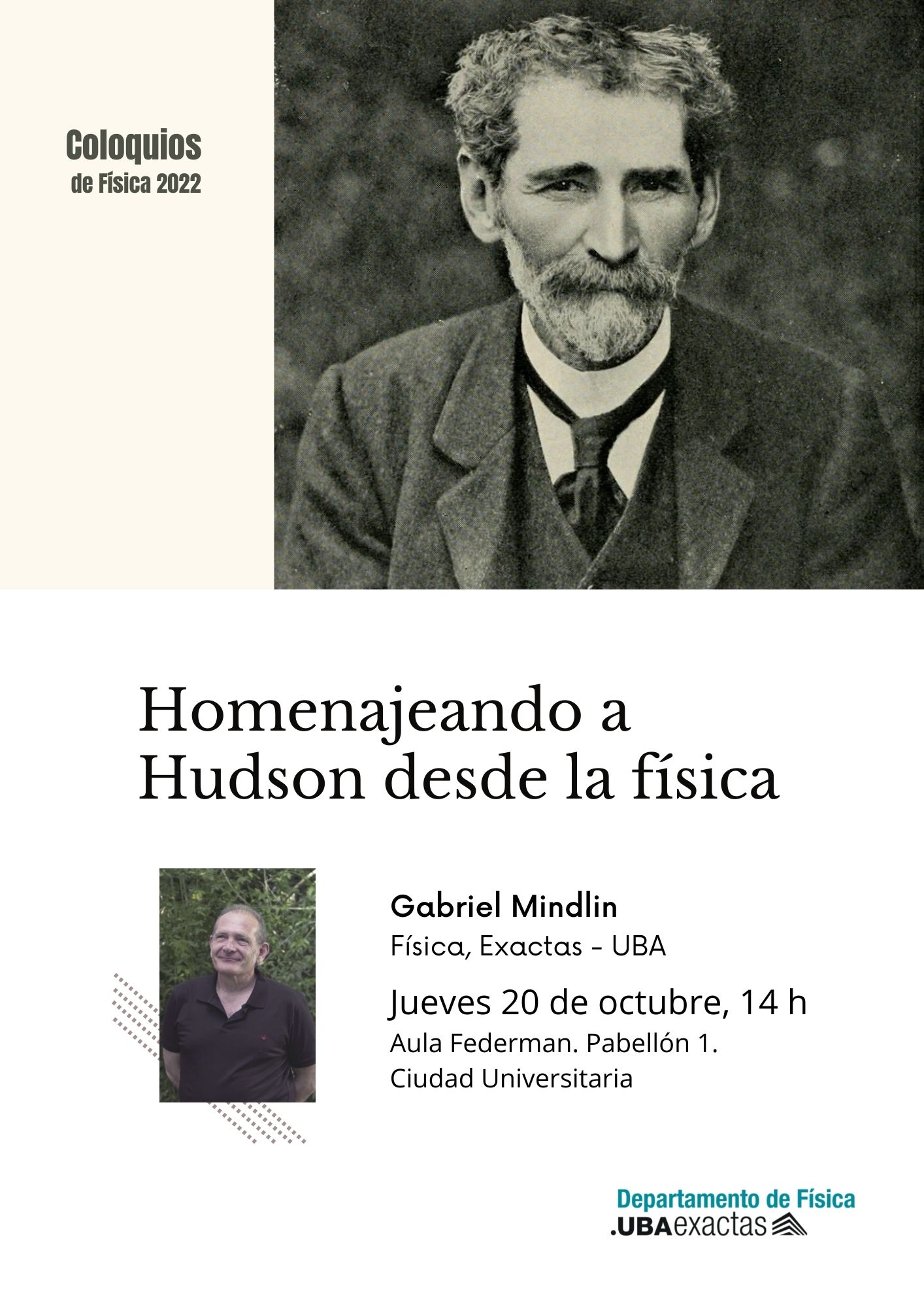
Gabriel Mindlin
Física, Exactas UBA. Conicet
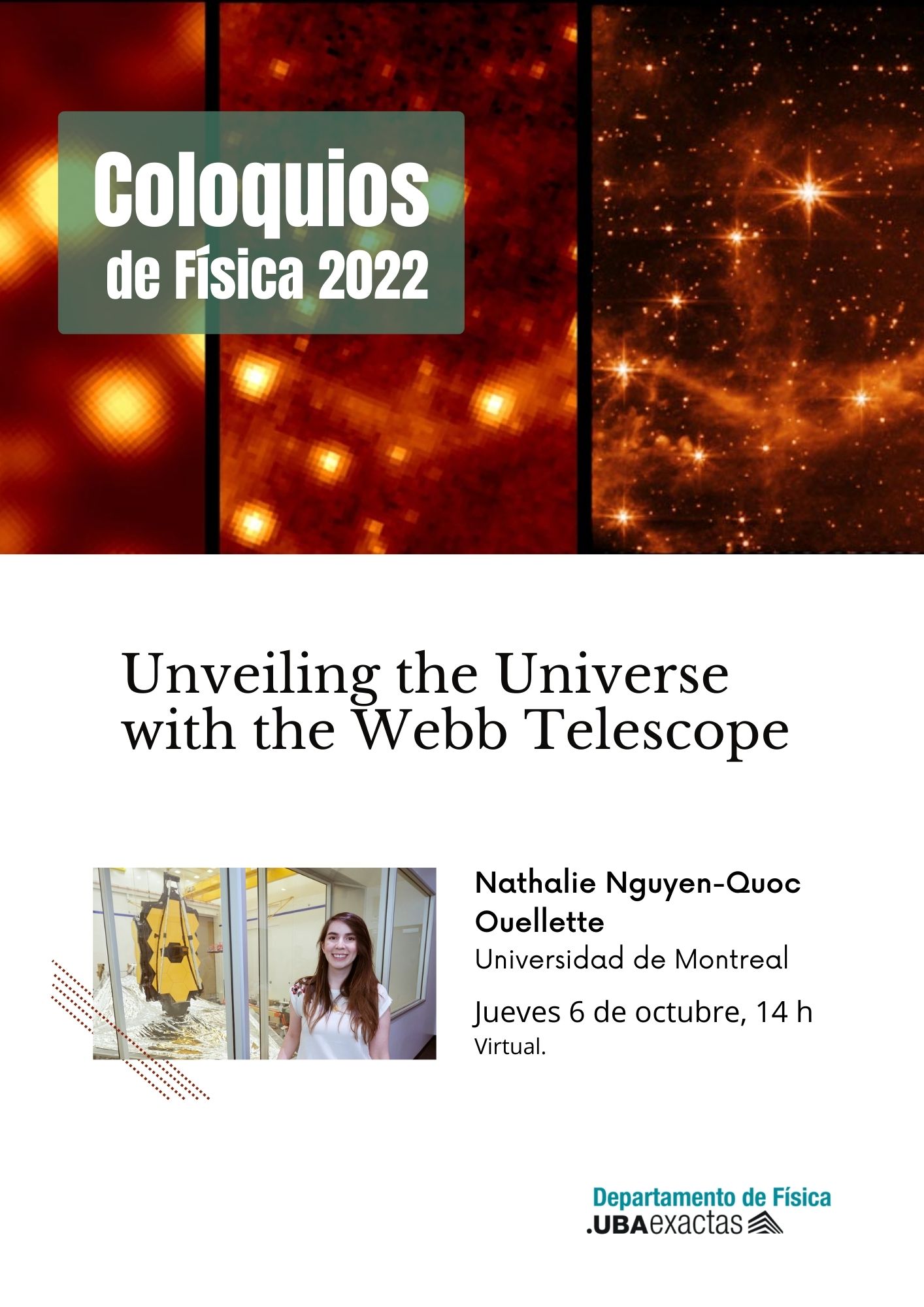
Nathalie Nguyen-Quoc Ouellette - Universidad de Montreal
The James Webb Space Telescope (JWST), the successor of the famous Hubble Space Telescope, has finally launched and has started doing science! The Webb Telescope, a 6.5m infrared telescope, is without a doubt one of the most complex machines ever built by humanity and the largest telescope ever sent to space. Thanks to Webb, we now have the capacity to see farther than ever in our Universe, peer through the cosmic dust sprinkled throughout galaxies and discover and study new alien worlds. This project is an international collaboration between NASA, the European Space Agency and the Canadian Space Agency. In addition to contributing the FGS/NIRISS instrument, Canada and its astronomers are already some of the first to use the telescope and have already begun producing groundbreaking science thanks to its revolutionary data. As the first few images and bits of data start to trickle in, you will learn about some of Webb's very first exciting discoveries and what this mission means for the future of space astronomy.